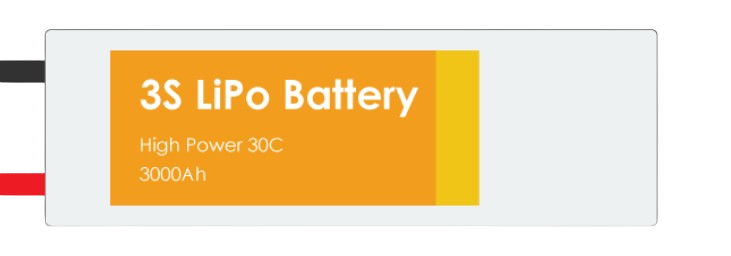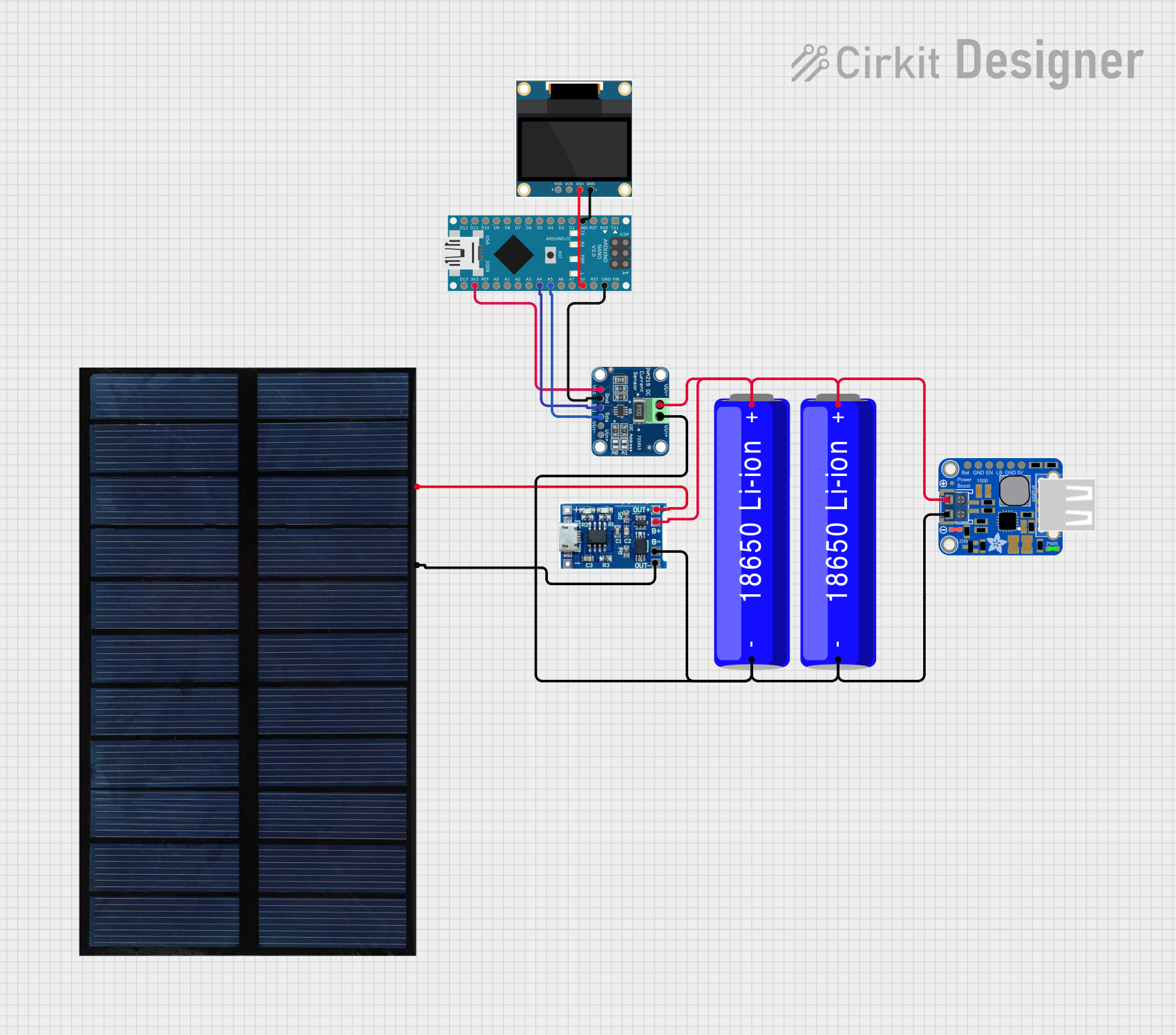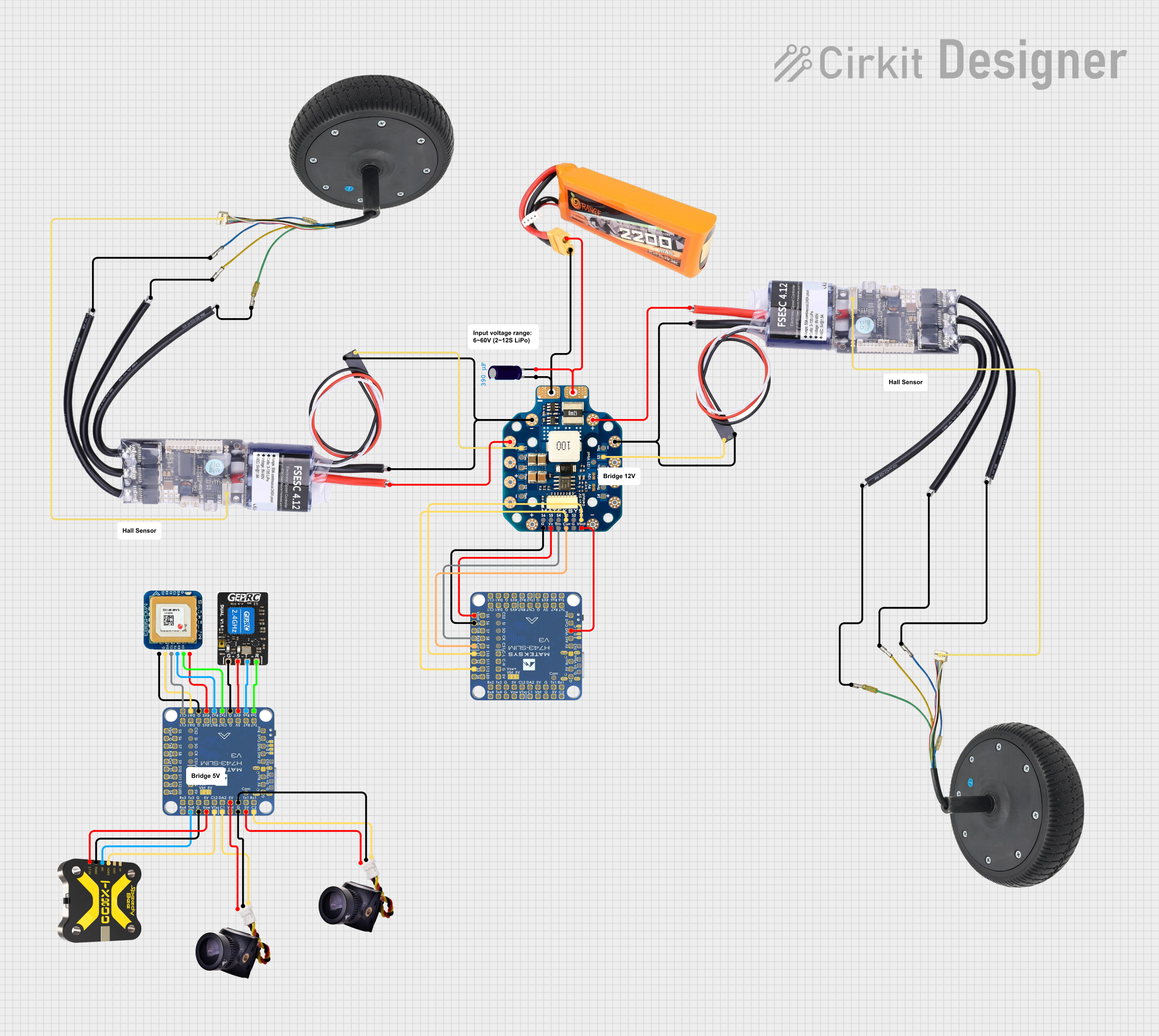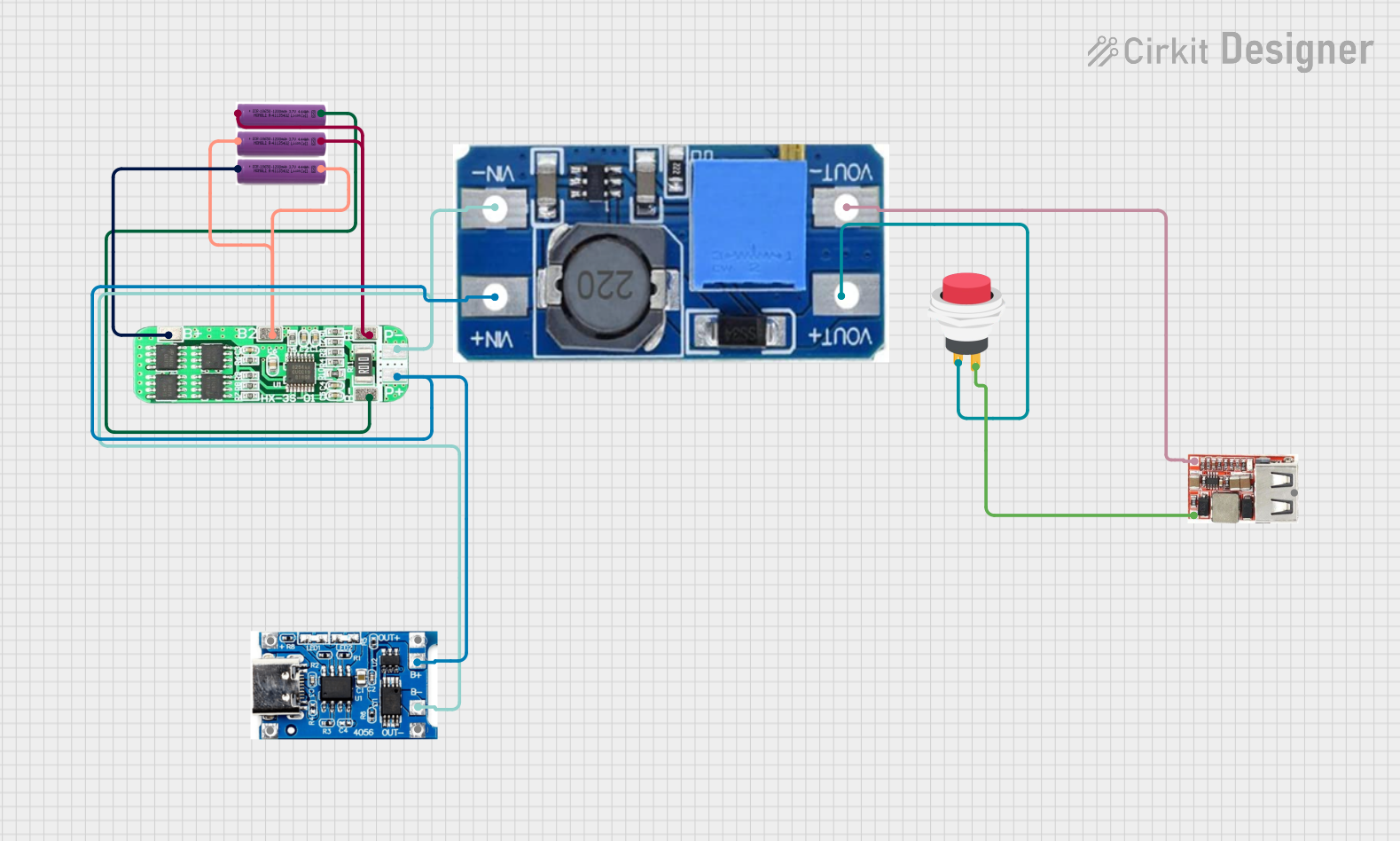
How to Use Lipo Battery: Examples, Pinouts, and Specs

 Design with Lipo Battery in Cirkit Designer
Design with Lipo Battery in Cirkit DesignerIntroduction
A Lithium Polymer (LiPo) battery is a rechargeable battery that utilizes a polymer electrolyte instead of a liquid electrolyte. LiPo batteries are known for their high energy density, lightweight, and form factor flexibility. The 2200mAh LiPo battery is commonly used in applications such as remote-controlled (RC) cars, drones, portable electronics, and projects involving microcontrollers like the Arduino UNO.
Explore Projects Built with Lipo Battery

 Open Project in Cirkit Designer
Open Project in Cirkit Designer
 Open Project in Cirkit Designer
Open Project in Cirkit Designer
 Open Project in Cirkit Designer
Open Project in Cirkit Designer
 Open Project in Cirkit Designer
Open Project in Cirkit DesignerExplore Projects Built with Lipo Battery

 Open Project in Cirkit Designer
Open Project in Cirkit Designer
 Open Project in Cirkit Designer
Open Project in Cirkit Designer
 Open Project in Cirkit Designer
Open Project in Cirkit Designer
 Open Project in Cirkit Designer
Open Project in Cirkit DesignerTechnical Specifications
General Characteristics
- Chemistry: Lithium Polymer (Li-ion Polymer)
- Nominal Voltage: 3.7V
- Capacity: 2200mAh
- Max Charge Voltage: 4.2V per cell
- Discharge Cut-off Voltage: 3.0V per cell
- Max Continuous Discharge Current: 2C (4.4A)
- Max Burst Discharge Current: 5C (11A)
- Charge Temperature Range: 0°C to 45°C
- Discharge Temperature Range: -20°C to 60°C
- Dimensions: Varies by manufacturer, typically around 105mm x 33mm x 7mm
- Weight: Approximately 60g
Connector and Pin Configuration
| Pin | Description |
|---|---|
| + | Positive terminal |
| - | Negative terminal |
| T | Thermistor (optional, not present on all models) |
| B | Balance connector (for multi-cell packs) |
Usage Instructions
Charging the LiPo Battery
- Use a LiPo-compatible charger. Always charge LiPo batteries with a charger specifically designed for them to prevent overcharging.
- Balance Charging: If your battery has multiple cells, use the balance charging feature to ensure all cells are charged equally.
- Monitor the Charging Process: Never leave a charging LiPo battery unattended.
- Charge at Safe Locations: Charge on a non-flammable surface and away from flammable materials.
Discharging the LiPo Battery
- Do not over-discharge. Always monitor the voltage to ensure it does not drop below 3.0V per cell.
- Discharge Rate: Do not exceed the maximum continuous discharge rating of the battery.
- Temperature: Avoid using the battery in extreme temperatures.
Connecting to an Arduino UNO
To power an Arduino UNO with a LiPo battery, you can use a LiPo battery shield or a voltage regulator to step down the voltage to 5V.
// No specific code is needed to connect a LiPo battery to an Arduino UNO.
// However, ensure that the voltage is regulated to 5V before connecting.
Troubleshooting and FAQs
Common Issues
- Battery won't charge: Ensure that the charger is functioning and the connections are secure. Check if the battery voltage is not below the safe limit.
- Swollen battery: Discontinue use immediately. A swollen battery can be dangerous and is a sign of damage or overcharging.
- Reduced runtime: This could indicate the battery is nearing the end of its life cycle or has been damaged.
FAQs
Q: Can I charge a LiPo battery with a regular Li-ion charger? A: No, you should always use a charger specifically designed for LiPo batteries to prevent damage.
Q: How do I dispose of a LiPo battery? A: LiPo batteries should be disposed of at a battery recycling center. Do not throw them in the trash.
Q: How long does a LiPo battery last? A: The lifespan of a LiPo battery is typically around 300-500 charge cycles, but it can vary based on usage and care.
Q: Is it safe to leave a LiPo battery charging overnight? A: It is not recommended to leave LiPo batteries charging unattended, including overnight.
Q: What should I do if my LiPo battery gets punctured? A: If a LiPo battery gets punctured, it can be dangerous and may catch fire. Place it in a safe area away from flammable materials and contact local waste management for proper disposal.
Note: This documentation is for informational purposes only. Always consult the manufacturer's datasheet and safety guidelines for your specific LiPo battery model before use.